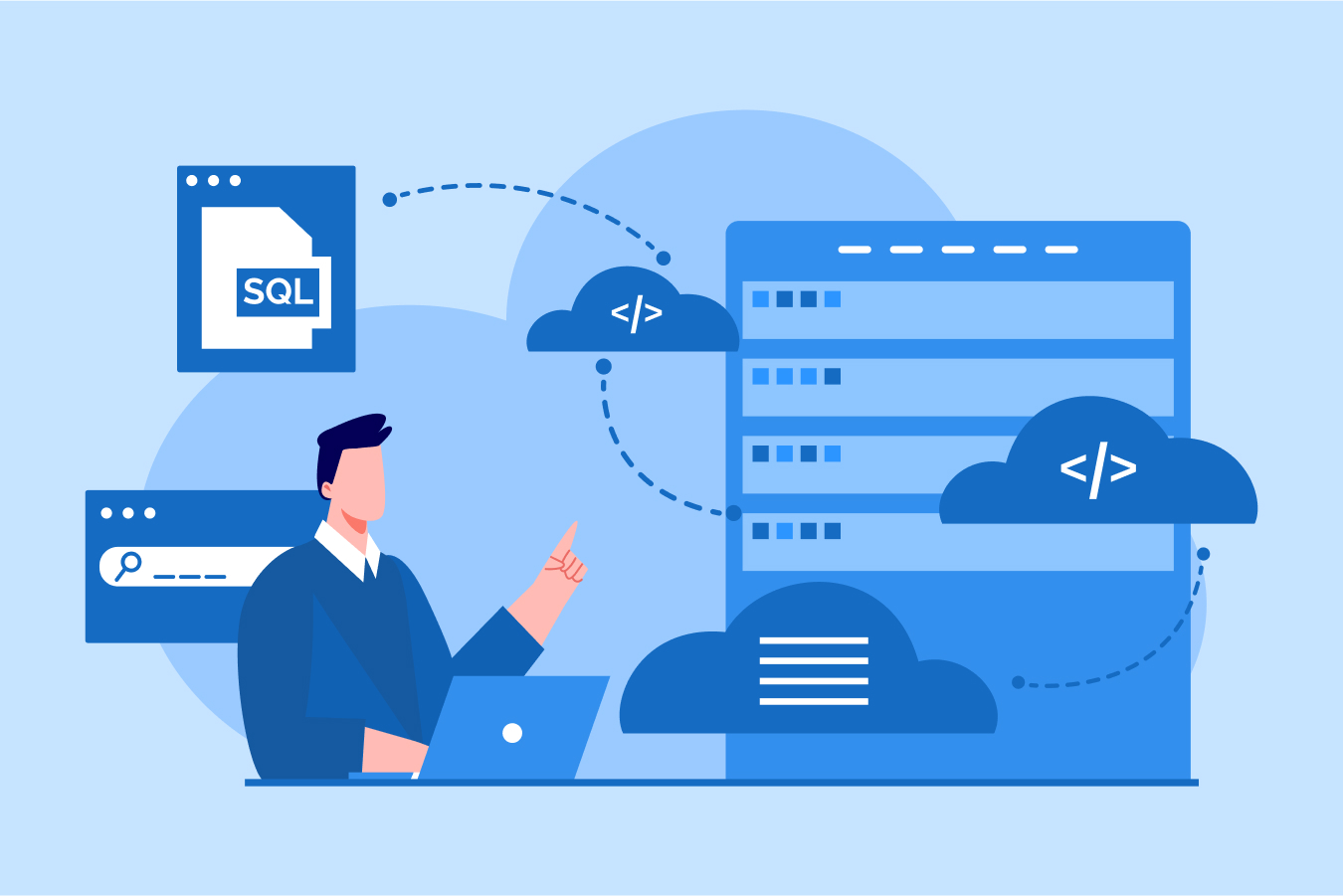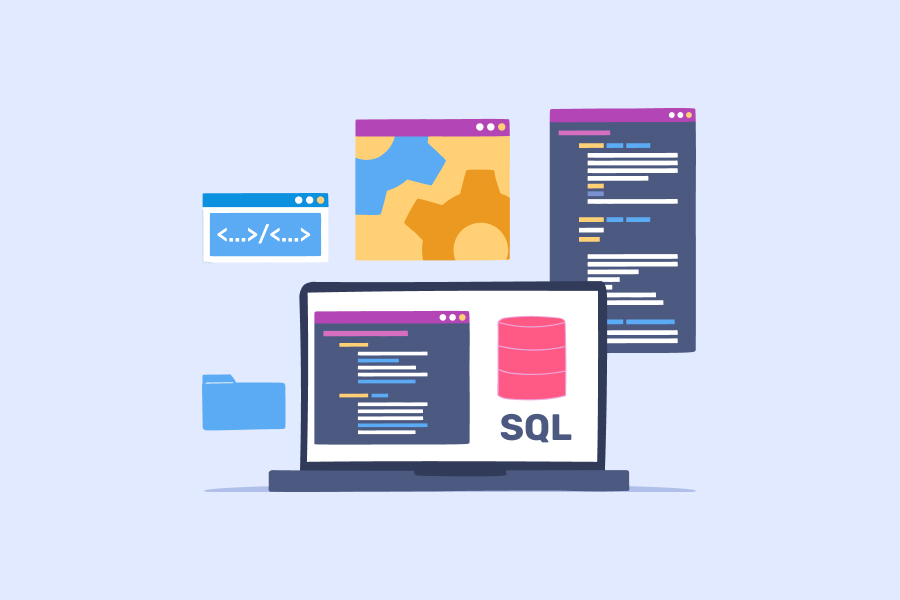DBMS Architecture: Types, Benefits, & Examples
Did you know that a database management system (DBMS) architecture allows users to connect with the database and makes it easier for them to get their requests fulfilled? DBMS architecture lets developers keep up with the rapid pace of change in software product development while also taking advantage of emerging technologies. It gives them the flexibility to extend, partition, and customize their applications more effectively.
Additionally, breaking down larger systems into smaller services makes it easier for teams to update components independently, without the risk of disrupting other parts. In this blog, we will learn about database architecture in DBMS, its different types, and its benefits.
What is DBMS Architecture?
A database architecture is an essential representation of how a database management system is designed, developed, implemented, and maintained. The architecture enables it to be broken into individual parts that can be independently changed, altered, or replaced. It also helps users comprehend the assorted components of a database.
Having the right database architecture in place is vital for efficient and speedy data access, as well as safeguarding critical information. In other words, selecting the right DBMS architecture proves beneficial for effective data management.
Get an Assured Job guarantee by enrolling in our data science placement guarantee course.
Different Types of Architecture in DBMS
Given below are different types of architecture in the database management system.
1-Tier Architecture: A Detailed Overview
A one-tier architecture in DBMS is the most basic type of database configuration. The client, server, and database all exist on the same machine in this setup. However, it should be noted that this particular setup is not usually adopted by industries. It is rarely used in production due to its limited scalability and applications.
Example of 1-Tier Architecture
An example of 1-tier architecture is when the client, server, and database are all present on the same machine. This means that a user can install a database on a local system and use it to practice SQL queries. For instance, in order to learn SQL, it can be beneficial to set up an SQL server and database on one’s local system. This allows users to have a direct connection with the relational database and carry out operations entirely through their own devices.
Benefits of 1-Tier Architecture
The benefits of a 1-tier client-server architecture are listed below.
- Affordable: Since 1-tier architecture does not require any additional hardware, it is economical to use. Due to its relative cost-effectiveness for small-scale projects, it has become a popular choice among developers.
- Implementation is Easy: 1-tier architecture is often preferred due to its simple deployment process, making it ideal for smaller projects. This architecture requires less setup and maintenance compared to more complex structures, such as two-tier or three-tier architectures.
- Easy to Monitor: As only one machine is used in a 1-tier architecture, monitoring the system is easier, and there are fewer dependencies between components.
2-Tier Architecture: A Detailed Overview
A 2-tier DBMS system architecture is a model where the presentation layer runs on a user device (such as a PC, mobile, or tablet) and data is stored on a server known as the second tier. This structure offers heightened security for DBMS since it is not directly accessible to an end-user.
Additionally, it allows for faster and more direct communication between the two components. In this architecture, we can observe that each client is connected to one server, specifically, Client 1, Client 2, and Client 3 are linked with the same server.
Example of a 2-Tier Architecture
In a situation where you go to the bank to withdraw cash, the process will involve entering your withdrawal amount and account details on a withdrawal slip. The banker then uses their credentials (e.g., making an API call) to access the server-side database in order to verify that there is enough money available in your account for such a transaction.
This client-server model falls into the two-tier database management system architecture, which involves communication between two distinct systems.
Benefits of a 2-Tier Architecture
The benefits of a 2-tier client-server architecture are listed below.
- Deploying is Easy: Compared to 3-tier architecture, 2-tier architecture is simpler to deploy. This is because it is a basic client-server model. The client-side applications can communicate directly with the server side.
- Easily Accessible: Fast retrieval is possible because of the 2-tier architecture’s simple database access. There is a direct connection between the client and server, allowing for improved and faster performance.
- Low Difficulty Level: Since 2-tier architecture possesses two independent components, i.e., the client and the server, it is easy to comprehend and maintain
- Faster Processing: The 2-tier architecture is capable of faster processing because the model is simple and only the server handles the database functionality.
Stand out in your interview by learning from our database interview questions and answers.
3-Tier Architecture: A Detailed Overview
A 3-tier DBMS architecture is the most popular form of database architecture. This setup divides functional processes, logic, data access, data storage, and user interfaces into distinct modules. These modules include a presentation layer, an application layer, and a database server.
Each part of this system has its own responsibilities, which work together to provide a comprehensive solution for managing data access information. Let’s look at each of these layers in detail.
- Presentation Layer: This is the front-end layer (user interface) and is also called the client layer. The user interface allows users to communicate directly with the application layer, which is responsible for managing and interacting with the data.
- Application Layer: This layer consists of a set of business logic, rules, and algorithms needed to manipulate user input and serve requests from the presentation layer. Instead of handling database calls directly from the web server, as seen in the 2-tier architecture, this tier acts as an intermediary between them, providing additional flexibility when it comes to scalability and customization.
- Data Server: The data server houses all of our persistent databases used to store information about our application, such as customer accounts or product catalogs, along with supporting components like index files and logging processes for audit trails, etc. It usually complies with database standards like Structured Query Language (SQL).
Example of a 3-Tier Architecture
Consider using a web application to search for movie schedules in your area as a simple example of a 3-tier design. Your zip code and the date you want to see the movie are among the fields on the first web page that the presentation layer shows you. After the application layer receives this data, it prepares a query and sends it to the database layer.
The application layer converts the returned data into a web page once the database system has performed the query and returned the results (a list of movies available at your location). The page is then returned to the browser, where the presentation layer displays it on a laptop or other device.
Benefits of a 3-Tier Architecture
The benefits of a 3-tier client-server architecture are listed below:
- Data Integrity: The 3-tier architecture of a DBMS is designed to maintain data integrity by separating the user interface, the application server, and the data storage. This separation allows for more efficient data access and manipulation.
- Data Security: The separation between the client and server also enhances data protection and security, as it reduces the risk of unauthorized access to the database.
- Scalability: The 3-tier architecture allows for the easy addition of new hardware and software components to manage the workload without putting any restrictions on the number of clients.
To better understand this architecture in DBMS, you can also take a comprehensive data science course.
Conclusion
DBMS architecture gives users more control and access to their database files by organizing and managing the stored information. It allows users to perform various operations on the data, such as creating, editing, or updating it as needed. Additionally, a DBMS helps ensure that only authorized personnel can change the database files. This enhanced level of security keeps the user-supplied data accurate and up-to-date.






